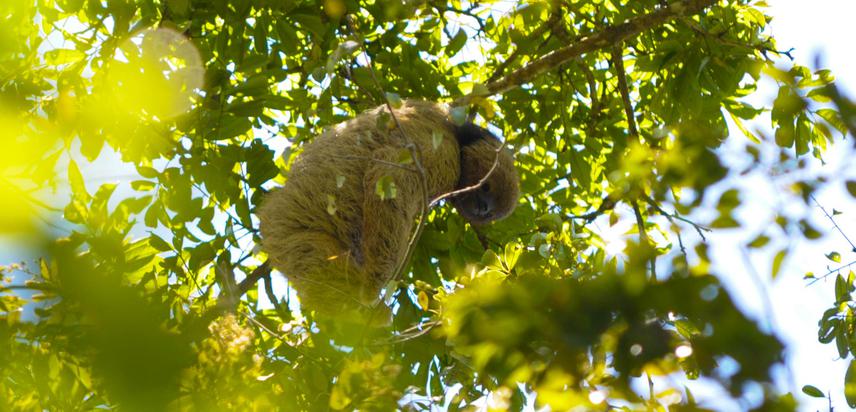Paloma Marques Santos
Simulations of the landscape dynamics have provided a widely range of insights about the future of environmental situations. Still, only a few works have used an empirical and refined approach based on species requirements for conservation. There is urgent need to understand the factors that influence species occurrence, particularly endangered ones, and how this could be projected into the future. This project aims at identifying which environment variables affects the occurrence of the endangered maned-sloth, in the fragmented Brazilian Atlantic Forest, developing future scenarios designed to improve the conservation status of the species, thus subsiding decisions for its conservation.

It is well-know that natural landscapes have given place to extensive anthropogenic areas, and such changes has critically threatened the biodiversity. Studies evaluating the fragmentation effects forest structure, allied with simulations of landscape dynamics represent strong initiatives for the definition of robust conservation strategies and benefit endangered species, as the maned sloth Bradypus torquatus. Being a strictly arboreal mammal, fragmentation and habitat loss represent important threats and The IUCN list as the main factors for the decrease of their population.
In 2010, the Chico Mendes Institute for Biodiversity Conservation (ICMBio) introduced the National Action Plan for the central Atlantic Forest mammals’ conservation, containing some goals to assist the maned sloth conservation. It states that increasing the connection between fragments would be the best strategy to improve the conservation of the species. Nevertheless, what exactly “improve connection” means for it? How do maned sloth “see” or feel the world around it? Specifically, is there a habitat threshold below which the landscape variables would not influence the species? Does the local variables correspond to strong predictors of the species? Does the species have a strong relationship with past landscape patterns? How the landscape transformations may affect the species occurrence in the future? All these questions are very relevant and we with our robust environmental analyses, we will have important answers that will assist the definition of the best strategies and better reallocate the resources for the species.
Thus, this work aims to understand better what affects the occupancy probability at the landscape level – improving the subsidies for landscape management – and in a local context - improving the subsidies for local management. It will also contribute to understand the maned sloth habitat requirements, which remains unclear. In addition, we will modelling the future scenarios, implementing some of those goals settled down by the ICMBio and using deforestation rates based on some public politics - for example, the Brazil New Forest Code, the country´s main legislation regarding conservation of native forests in rural properties. The near future might witness a small increase in the deforestation rate in rural properties, since the current code is less protective than the previous one. Therefore, knowing exactly how much loss of native forest, at the landscape scale, a maned sloth can sustain is of utmost importance for its long-term conservation.